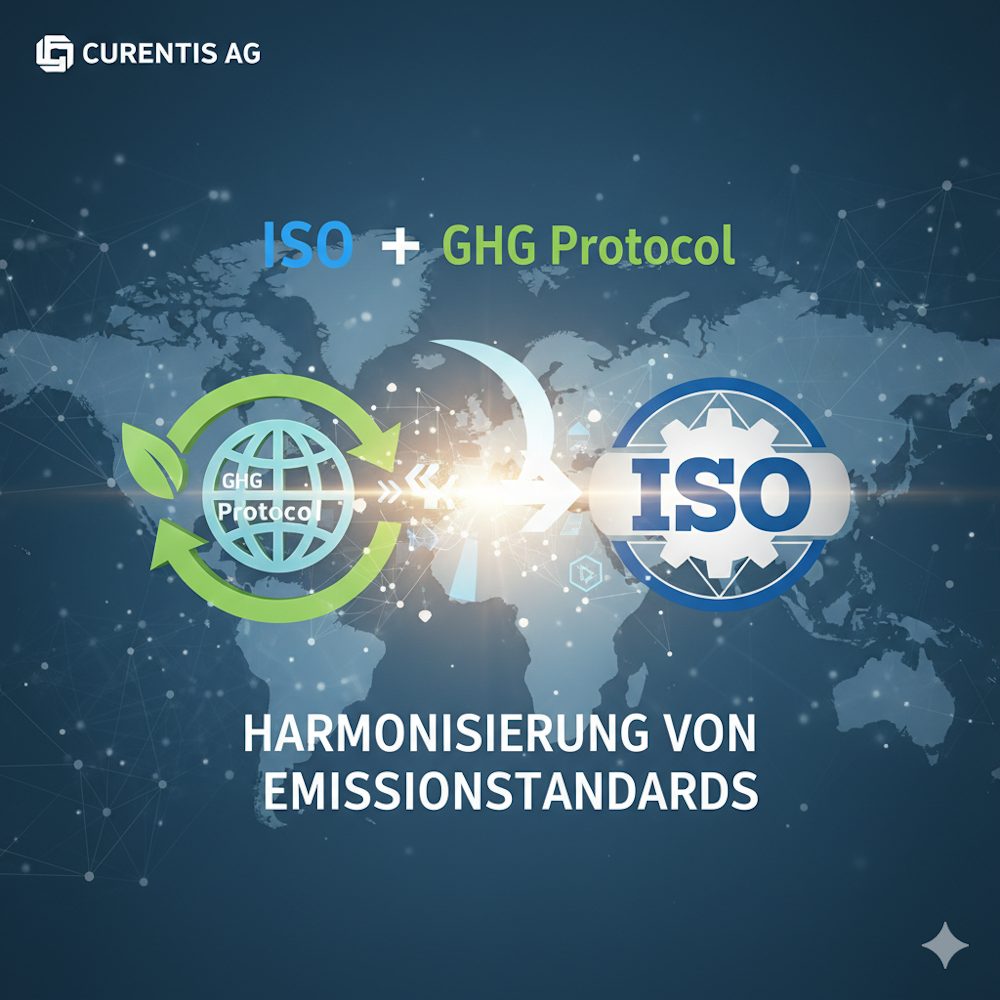ISO and GHG Protocol agree on strategic partnership to harmonize emission standards
In September 2025, the International Organization for Standardization (ISO) and the Greenhouse Gas (GHG) Protocol announced their strategic partnership. The aim is to harmonize and jointly develop their standards for measuring and reporting greenhouse gas emissions.
This long-awaited collaboration aims to create a globally standardized language for climate change data exchange that will make it easier for companies to report emissions, improve data quality and meet regulatory requirements more consistently.
Technical differences between the previous standards - a key clarification for companies
Although ISO 14064 and the GHG Protocol are both leading frameworks for greenhouse gas reporting, they have characteristic differences in structure, methodology and application focus that are of great importance to companies:
| Aspect | GHG Protocol | ISO 14064 |
| Publisher | World Resources Institute (WRI) & World Business Council for Sustainable Development (WBCSD) | International Organization for Standardization (ISO) |
| Frame and structure | Standardized framework for corporate reporting with a focus on Scope 1, 2 and 3 emissions | Three-part standard: ISO 14064-1 (organization), ISO 14064-2 (projects), ISO 14064-3 (verification) |
| Depth of detail | Very detailed, practical instructions including industry-specific tools | Technically precise specifications with less room for interpretation |
| Scopes / Categories | Scope 1: Direct emissions Scope 2: Indirect emissions from energy Scope 3: Other indirect emissions in the value chain | Covers scopes 1, 2 and 3, without explicit categorization as "scopes"; more categories based on sources |
| Verification | Voluntary, no certified examination required | Integrated verification standard (ISO 14064-3) for third-party verification |
| Application context | Widely used in voluntary corporate reporting and frameworks such as SBTi, CDP | Preferred in regulatory contexts and for compliance purposes (e.g. EU CSRD) |
| Practical benefits | Provides comprehensive guidelines for internal emissions calculation and management | Provides a formal framework for verified, external reports |
These differences mean for companies: The GHG Protocol offers a flexible and practical methodology that is particularly suitable for the strategic management of the entire value chain. ISO 14064 places more emphasis on consistency, transparency and verifiability, which is crucial for compliance, audits and regulatory requirements.
Harmonization: a bridge between flexibility and certification
The new partnership aims to combine the strengths of both standards: The practical, tried-and-tested guidance of the GHG Protocol will be combined with the structured, technically precise verifiability of the ISO standards. At the same time, a joint standard for product carbon footprints will be developed, offering companies more granular control options.
Significance for companies and regulatory embedding
Harmonization offers numerous advantages: Coordination facilitates reporting processes, improves data consistency and supports compliance with global and regional climate protection obligations, including CSRD in Europe or US standards. Companies can thus address their climate targets with a more reliable database and more efficient processes and provide investors with more transparent information.
Regulatory and voluntary reporting standards, which previously had different requirements, are moving closer together with the coordinated standards and creating a common foundation for climate reporting.
Challenges remain and CURENTIS supports the implementation
The changeover requires companies to carefully adapt their data and reporting systems. Transition phases and clarification of open methodological questions are to be expected. Civil society also warns that harmonization must not lead to a lowering of quality standards, but must guarantee an ambitious improvement.
CURENTIS supports companies in implementing the new requirements with consulting services, training and technical integration to ensure a smooth transition and sustainable reporting quality.
Author:
 Philipp Ehren has been a Senior Consultant at CURENTIS AG since 2021. He is our specialist for sustainable finance and has several years of experience in project work in risk management with a focus on IT applications. He is also a trained project manager.
Philipp Ehren has been a Senior Consultant at CURENTIS AG since 2021. He is our specialist for sustainable finance and has several years of experience in project work in risk management with a focus on IT applications. He is also a trained project manager.



